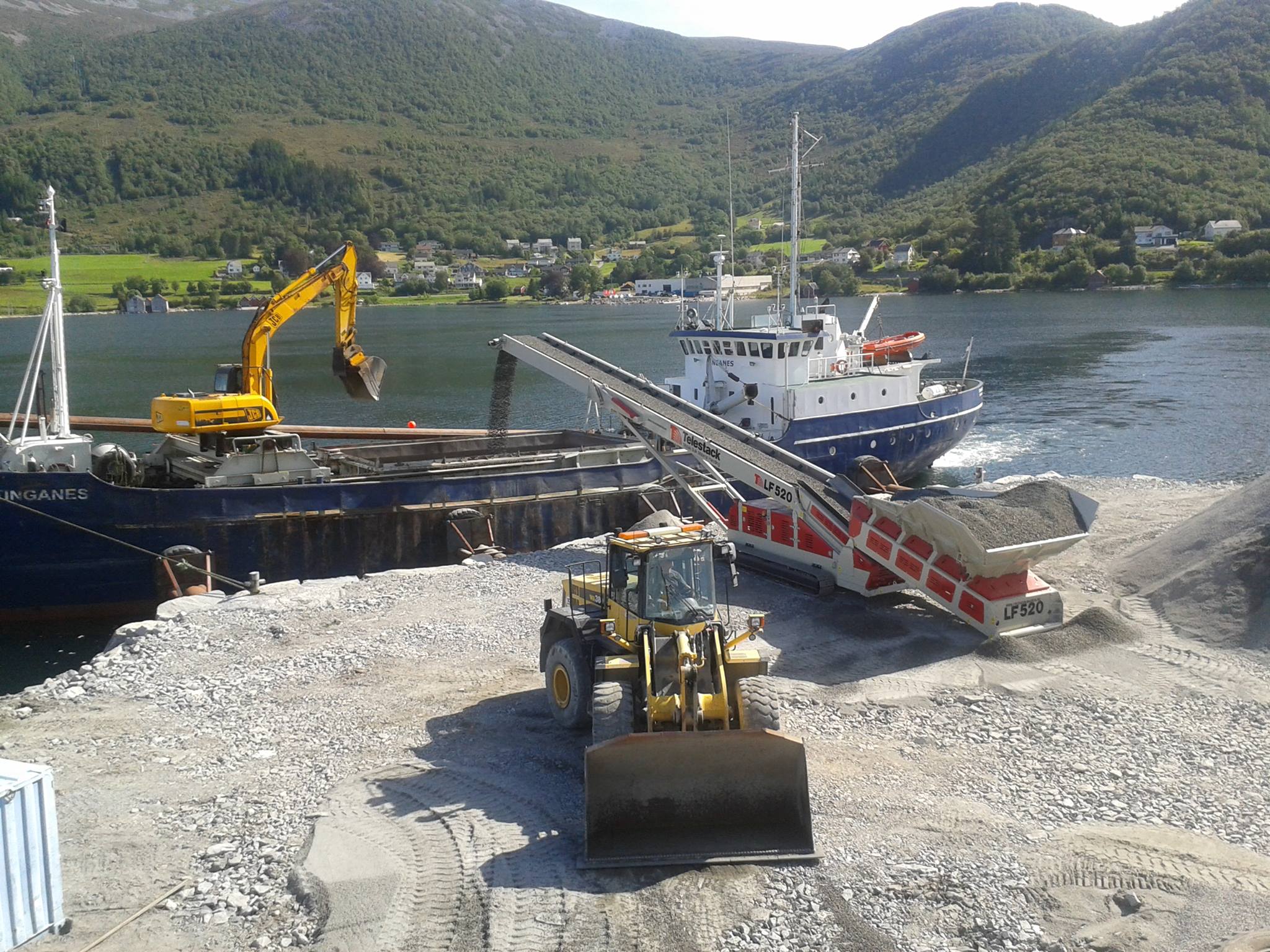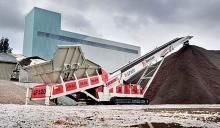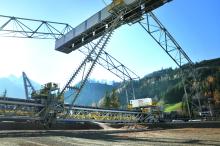
Conveyor belts are said to be the beating heart of many industrial sectors as Patrick Smith reports.
Conveyor belts keep the globalised cycle of industry moving, taking on anything that needs to be transported quickly, safely and undamaged.
Often, in harsh working conditions, such belts cope with distances of up to 40km and height differences of up to 700m, says German company
“They are the beating heart of many industrial sectors and are particularly tough,” says the company, which is one of a number worldwide producing belts for industry, including mining and quarrying.
“If the belt system experiences an extended downtime, the entire production chain frequently collapses. This in turn results in considerable sales losses for the operators,” says the company.
“To allow conveyor belt systems to run free of faults and cost-effectively in the long term, even when subjected to high loads, the operators are focusing much more on prevention.”
Innovative electronic monitoring systems, including those from ContiTech, make it possible to identify the exact condition of the conveyor belts at any time.
Damage, such as longitudinal slitting on conveyor belts, frequently occurs in systems where copper, iron or jagged rocks bounce along the surface of the belt, causing strain and damage, ands this can have serious consequences for system operation and, in the worst-case scenario, lead to total failures.
“With our independently developed, intelligent software solution, Conti MultiProtect, damage to conveyor belts can be detected early on while the system is running and repaired in good time. This helps us to avoid extended downtimes,” says Patrick Raffler, ContiTech application engineer.
Conti MultiProtect is also able to monitor the condition of the joints and identify damaged spots within the carcass.
“This permanent monitoring gives us a detailed picture of the condition of the conveyor belts at all times without having to interrupt operations. This allows carcass repairs to be scheduled preventively and in good time, thereby reducing maintenance costs,” says Raffler.
Meanwhile,
“Germany is a key market for us and our products are well-known, widely distributed and trusted. We have LF units across the globe that are used in a variety of applications from stockpiling crushed glass in Germany, barge loading on an airport construction project in Japan, to a coal ash clean-up project in USA,” says Malachy Gribben, commercial director.
“The addition of the Revolution feature which allows the unit to turn 360°, has added to the flexibility and functionality of the unit.
“We continue to invest in our hopper feeder range and our portfolio of LF applications is by far the most varied and comprehensive among manufacturers of this type of product and our units in the field are supported by experienced and reliable partners who understand their customer’s business.”
The LF520 is designed to work at production rates of up to 500tonnes/hour (550tons/hour).
Telestack says its low-feed, hopper feeder range is designed to be loaded directly by various equipment, including wheeled loaders, grab cranes and excavators, as well as to feed auxiliary equipment; reclaim to other conveyors; directly load ships, trucks and rail wagons. The company says it has excellent mobility on site and will eliminate double handling of material, which reduces overall costs for operators.
The range of standard machine types is available with boom lengths up to 24m or fully customised to suit a client’s specific application, feeding equipment and site conditions.
Telestack says the LF range has a generous hopper width and the heavy-duty feeder has a full impact bed for aggressive application/large lump sizes which makes it the ideal design for being fed by loader and excavator.
“We had an LF514 at the
“Our ability to demonstrate the versatility of the LF has quickly given it a solid reputation. We have a customer in Norway who uses his LF520 to stockpile in his quarry and then tracks the LF520 to the quayside and uses the same unit to load barges.
“We have many who use it in warehouse applications simply because it is easier to feed as the loader is able to drive straight in and tip.”
Vecoplan agrees that with high operational reliability and flexible application possibilities, conveyor belts are indispensable for the transport of bulk goods in industry, citing its transport systems for bulk materials, the VecoBelt pipe conveyor.
The company says that the VecoBelt is ideal for conveying bulk materials over long distances either horizontally or on a slight incline, with the forward-moving VecoBelt conveyor running inside a tube and not on rollers. The fully enclosed belt system runs on a cushion of air, and is said to be particularly suited to the safe transportation of dust-laden materials.
Vecoplan says it has made some optimisations to the components, and further developed the technology of the VecoBelt series (500/800 and 1000 belt width), with the return belt now also running in an enclosed housing, supported by a return air duct. This means no material can fall or trickle down, for example near the return rollers. Another addition is that Vecoplan equips the VecoBelt with two scrapers at every drive station to remove impurities on the belt and prevent substances such as resin from sticking to the belt.
Vecoplan says that its conveyor components have built transportation lines worldwide covering a total length of more than 10km, the longest stretch being 430m and driven by two 30kW geared motors.
The VecoBelt conveys bulk materials over a distance up to 450m and has a capacity of up to 1,260m³/hour at 2.5m/second.
Superior Industries says it has completed manufacturing its first Razerlink mobile conveyor, a multi-functional machine designed to load, unload, transfer, and/or stockpile material.
According to Superior engineers, by combining mobility with telescoping conveyor technology the Razerlink limits downtime and accelerates material handling, while one-time handling of material aids in maintaining high quality material specification.
For applications not requiring telescoping capabilities, the Razerlink can be fitted with a fixed length, radial, or luffing conveyor, and the unit’s feed design can come in the form of a drive-over ramp, back-up ramp, or feed hopper, which accommodates most loading styles.
The units are built in 1,219mm or 1,828mm wide models and can transfer material at rates up to 1,500tonnes/hour.
From port terminals to quarries, conveyors and feeders can been found transferring large bulks of material due to their operating efficiency and cost-effectiveness.
“Conveyors offer the most cost-effective manner of transferring or stockpiling material on the market,” says
“Used within the quarry industry, mobile conveyors offer operators an efficient, reliable, robust material handling solution that reduces the operator’s dependency on haul trucks or wheeled loaders while offering less downtime and a greater lifespan.
“Differing discharge heights; transfer lengths; condition of terrain; availability of power; the frequency of repositioning, throughput, and budget are all factors that have driven the market to create a large range of mobile conveyor models.”
The company says that by introducing mobile conveyors or stockpilers into their processing line, operators can leave crushers and screens running, moving finished product just once with the wheeled loader straight to the delivery trucks.
“Ultimately, the introduction of conveyors in many cases results in the elimination of the double handling of material and therefore cutting operators’ cost per tonne,” says EDGE Innovate, which claims that employing conveyors for creating stockpiles improves production.
“With crushers and screeners no longer starved, operators can focus on continuously loading feed material, leaving conveyors to create larger stockpiles in a much smaller area.
“This is achieved by the stockpile conveyors’ ability to reach much higher discharge heights. In many cases, improved production can eliminate expensive overtime needed to meet productivity demands and reduce maintenance work that results from increased running hours.”









